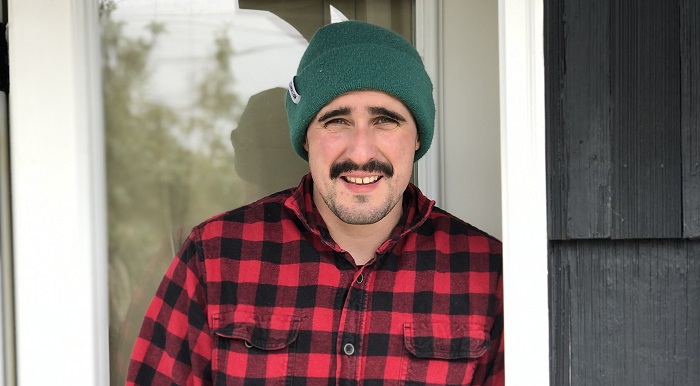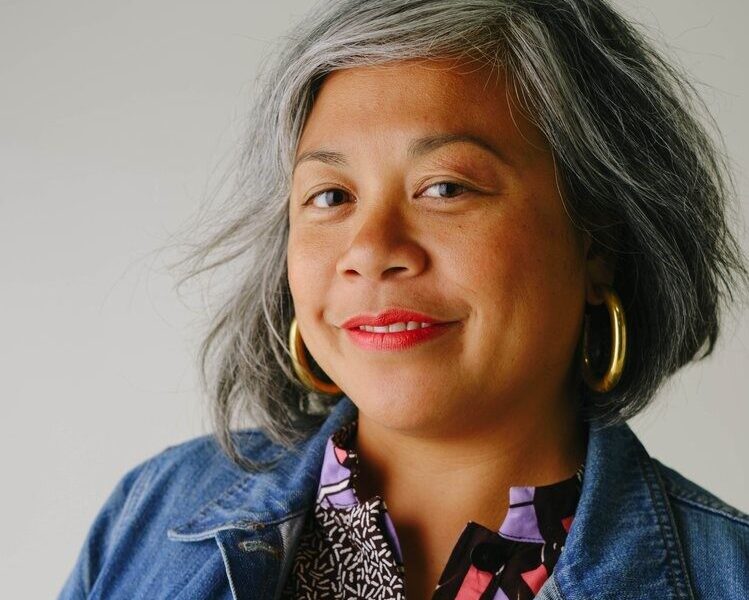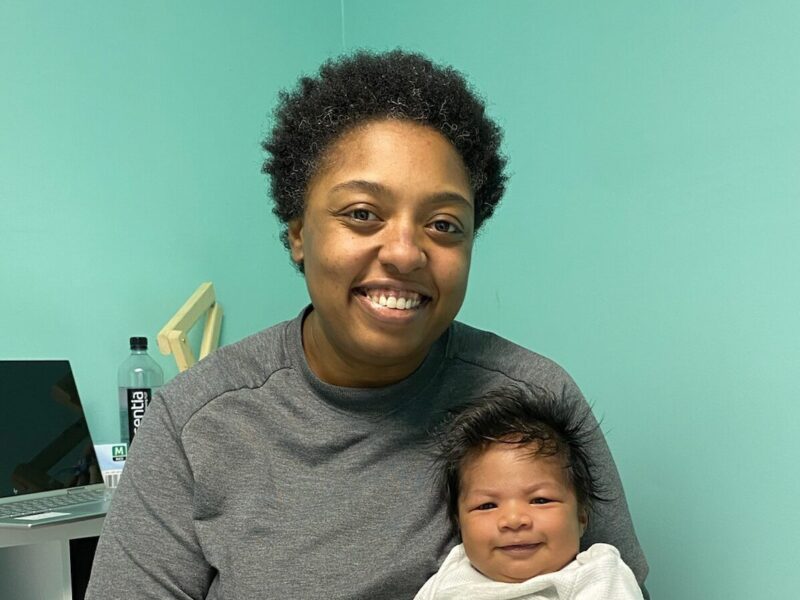If you watched a TLC reality show called My Pregnant Husband in 202, you may have seen Ari Robbins Greene, a Seattle-area trans man who shared his experience of being pregnant and giving birth.
Fast-forward to today, and Ari and his wife Caitlyn are the parents of two children. (Each gave birth to a child.) Ari works as a wage and hour class-action attorney and serves as an advisor to the Designing Motherhood exhibition on view at the Discovery Center.
In this Q&A, Ari discusses the universal experience of birth and his own experience of being pregnant.
Discovery Center: What do you hope people take away from seeing Designing Motherhood?
Ari Robbins Greene: I hope that people walk away feeling like they see their experience, or the experience of their ancestors, represented and reflected. And that they see the global and universal experience of birth as normal and one of the most quintessentially human things that we all experience at some point. Just feel connected to that experience, whether they’ve given birth themselves or not.
DC: You are a trans man who’s given birth. What surprised you about your journey?
ARG: A number of things. I felt more connected to other gestational parents than I anticipated I would feel. I felt more similar than I did different. I felt like I was entering a club, while originally I thought it was not intended for me. I was surprised by how upsetting, deeply upsetting it was to be invisible [as] that pregnant person because I was an invisible pregnant person for my whole pregnancy. I recall just daily interactions of being on a bus and at nine months pregnant and desperately wanting to sit down but feeling paralyzed and unable to ask for that from my fellow travelers. Nor was it offered. People didn’t see me as a pregnant person, and it was very, very lonely for that reason. I have a relationship with our donor and it was just a beautiful thing while I was pregnant. I thought I was gonna miss that part of being pregnant that some people get to experience, where they have a partner and both have a genetic contribution. Obviously, that’s not true for a lot of people, but I felt really connected to that person, and I see them in my child. And I feel a lot of love towards them even though we were sort of just acquaintances.
DC: How does Designing Motherhood address gender equality?
ARG: Just talking about parents out loud is sort of revolutionary. Acknowledging that there is such a thing as a mother is revolutionary in a big public space.
DC: Anything else you’d like people to know about the exhibition?
ARG: I hope that what comes through in the exhibit is this is an experience, and people have had their experiences ignored for a lot of reasons. And it’s not that we benefit from having more people in that club: We only benefit from expanding our understanding of who can get pregnant.
Image courtesy of Ari Robbins Greene





